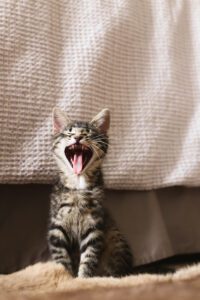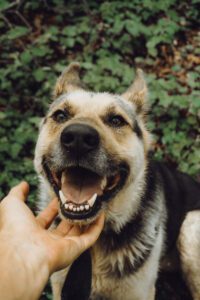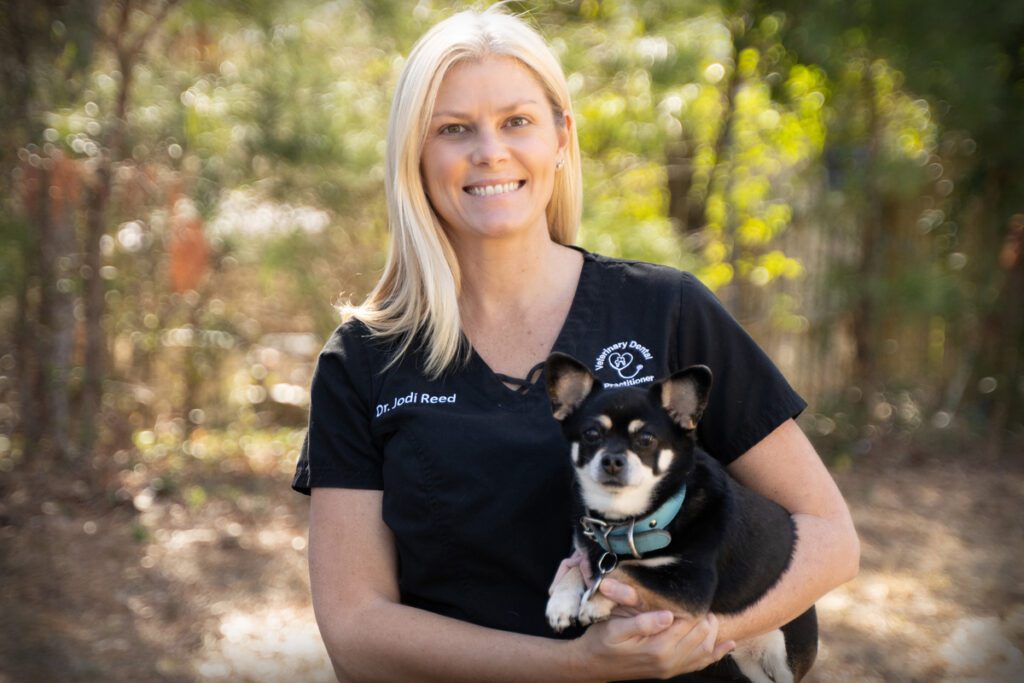THE DOS AND DON’TS FOR ENSURING YOUR PET’S SMILE IS HEALTHY!
Just as oral health is critically important to our quality of life and longevity, so it is with our cats and dogs. “Our pets dramatically benefit from having a healthy mouth, and being able to give them that makes all the difference in their comfort and allows them to live longer lives,” says Dr. Jodi Reed, practitioner at Veterinary Dental Center of Atlanta in Sandy Springs. Here, Reed encourages owners to make their pet’s dental health a priority by breaking down a few top dos and don’ts.

DO see your local vet regularly.
When it comes to oral care, there isn’t a large difference between what’s needed for cats and dogs. Reed suggests, “At a minimum, young adult animals should have their mouths checked at least once a year at their annual physical exam, and as they age, bi-annual vet visits become very important.”
DO plan for a professional cleaning once per year.
While it may seem normal for pets’ breath to smell, well, not great, bad breath is actually a key indicator your pet is suffering from a dental hygiene issue. Such problems can be avoided by scheduling and planning financially for a professional cleaning for your pet once per year. Additionally, Reed urges pet parents to demand full-mouth dental X-rays be taken every time their pet is under anesthesia for a dental procedure. Fifty percent of their teeth are below the gumline and can only be seen with X-rays, which means many painful oral issues could be missed if a complete oral exam and X-rays are not performed.
DO implement plaque prevention home care.
“Daily tooth-brushing is the gold standard, but that’s not realistic or possible for many pet owners,” Reed says. She suggests using Veterinary Oral Health Council’s highly selective Accepted Products list for cats and dogs as a resource. Each list offers a simplified breakdown of products (think water additives, oral gels, chew treats, dental diets and the like) that have been reviewed, tested and verified to reduce the risk of periodontal disease, which is the most common oral disease to affect cats and dogs.

DON’T assume your pet’s teeth are fine because they’re white.
When it comes to periodontal disease, buildup or damage may not always be obvious, since inflammation and infection largely affect areas below the gumline. If not caught and treated through professional dental Comprehensive Oral Health Assessment and Treatment (COHAT), it can lead to more serious issues with your pet’s other organs, such as the heart and kidneys.
DON’T opt for a nonanesthetic dental cleaning.
While it may seem like you’re doing your pet a favor by not putting them under anesthesia, nonanesthetic dental cleanings are incredibly uncomfortable for pets—plus, they don’t allow veterinarians to complete a full examination or cleaning, which could lead to major dental health problems going unseen.
Reed also advises owners of senior pets not to assume their pet is “too old” for anesthesia for a professional COHAT. “Senior and geriatric pets have some of the worst, most painful dental diseases,” she explains. “Anesthesia can be tailored specifically to each pet’s needs, even the older ones.”
DON’T assume your puppy or kitten can’t have dental problems.
Even young pets aren’t fully protected from periodontal disease if proper care isn’t given. Reed says, “We see several dental issues in 8- to 10-week-old kittens and puppies, some of which are very painful and if not corrected right away can lead to a lifetime of dental issues.”
DETAILS
Veterinary Dental Center of Atlanta
770.807.9435
atlantaveterinarydental.com
Veterinary Oral Health Council
vohc.org, @petsmileofficial
BONUS TIP
For dog owners: Don’t give your pup hard bones such as antlers or cow hooves to chew on. While they may help prevent plaque, Reed notes they often lead to other dental problems such as fractured teeth.
STORY: Taylor Heard
Simply Buckhead is an upscale lifestyle magazine focused on the best and brightest individuals, businesses and events in Buckhead, Brookhaven, Sandy Springs, Dunwoody and Chamblee. With a commitment to journalistic excellence, the magazine serves as the authority on who to know, what to do and where to go in the community, and its surroundings.











